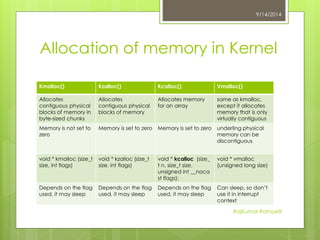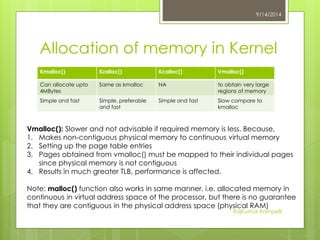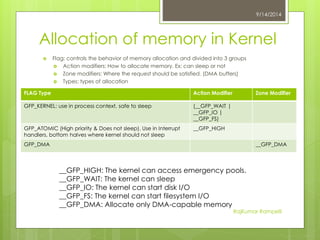The document provides an introduction to kernel and device drivers, outlining the roles of the kernel as the core of an operating system responsible for process and memory management, as well as the function of device drivers as bridges between hardware and user applications. It covers types of device drivers, how modules work, and the process of device registration and initialization, including memory allocation techniques and relevant system calls. Additionally, the document includes information on the role of the volume manager daemon (vold) in managing media and storage devices.
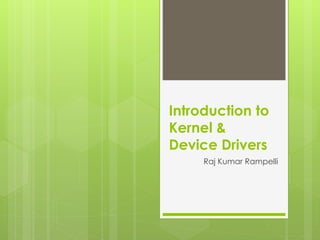
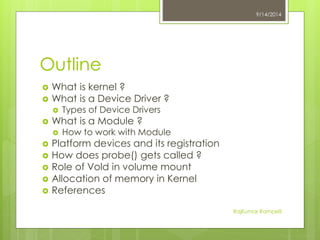
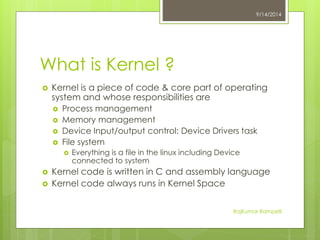
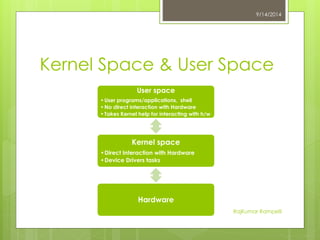

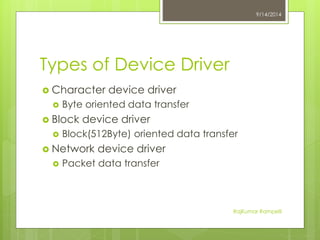
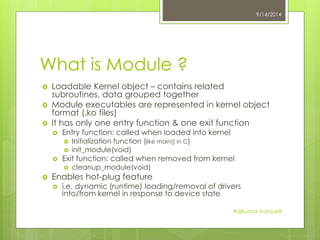
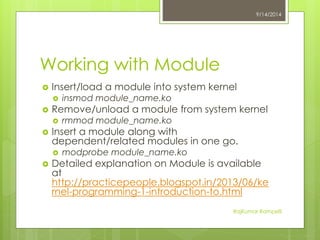

![Device registration and
initialization
Platform devices
Devices that are integrated into a given chip and
therefore are always there
The platform-specific initialization code statically
initializes such arrays of platform_devices and then
registers them using platform_register()
Therefore there is no need for sophisticated
probing.
What is probing()[Discussed in the next slide]
Instead, the string contained in
platform_device.name is compared
platform_driver.driver.name and a match is
assumed if they are equal.
9/14/2014
RajKumar Rampelli](https://image.slidesharecdn.com/kerneldevicedrivers-140914080651-phpapp02/85/Introduction-to-Kernel-and-Device-Drivers-10-320.jpg)
![How probe() gets called ?
Probe() is called when device is recognized by the platform
Driver’s init function gives kernel a list of devices it is able to service, along
with a pointer to a probe function. Kernel then calls the driver’s probe
function one for each device.
probe function starts the per-device initialization:
initializing hardware,
allocating resources, and
registering the device with the kernel as a block device.
Example: Kernel/drivers/mmc/host/sdhic-tegra.c sdhci_tegra_probe()
Host controller initialization at
kernel/drivers/mmc/host/sdhci.c sdhci_add_host()
Device initialization starts in
kernel/drivers/mmc/core/core.c mmc_rescan()
Starts execution when Host detects the device.
mmc_attach_sdio() sdio.c [core driver]
mmc_attach_sd() sd.c [core driver]
mmc_attach_mmc() mmc.c [core driver]
9/14/2014
RajKumar Rampelli](https://image.slidesharecdn.com/kerneldevicedrivers-140914080651-phpapp02/85/Introduction-to-Kernel-and-Device-Drivers-11-320.jpg)

